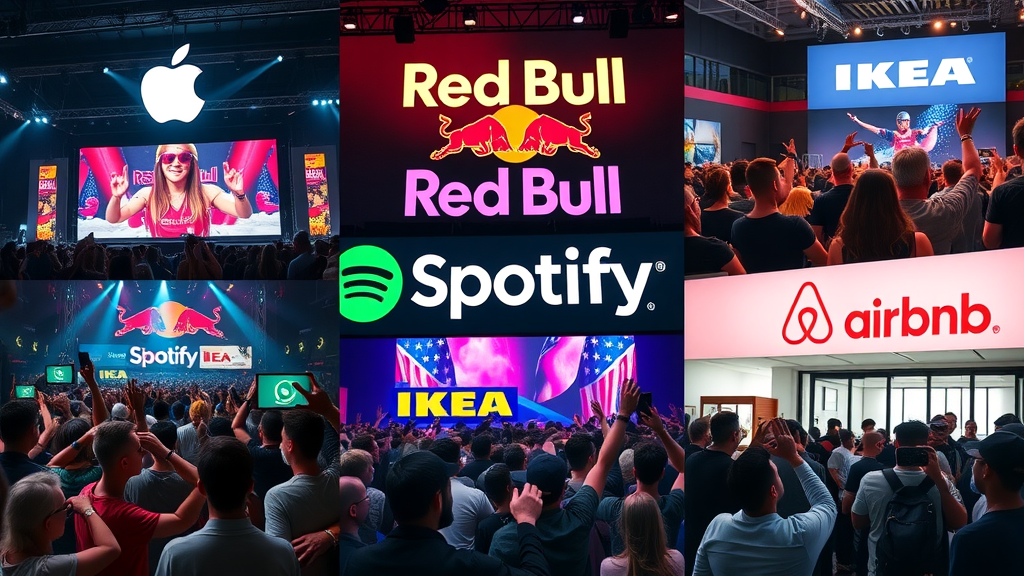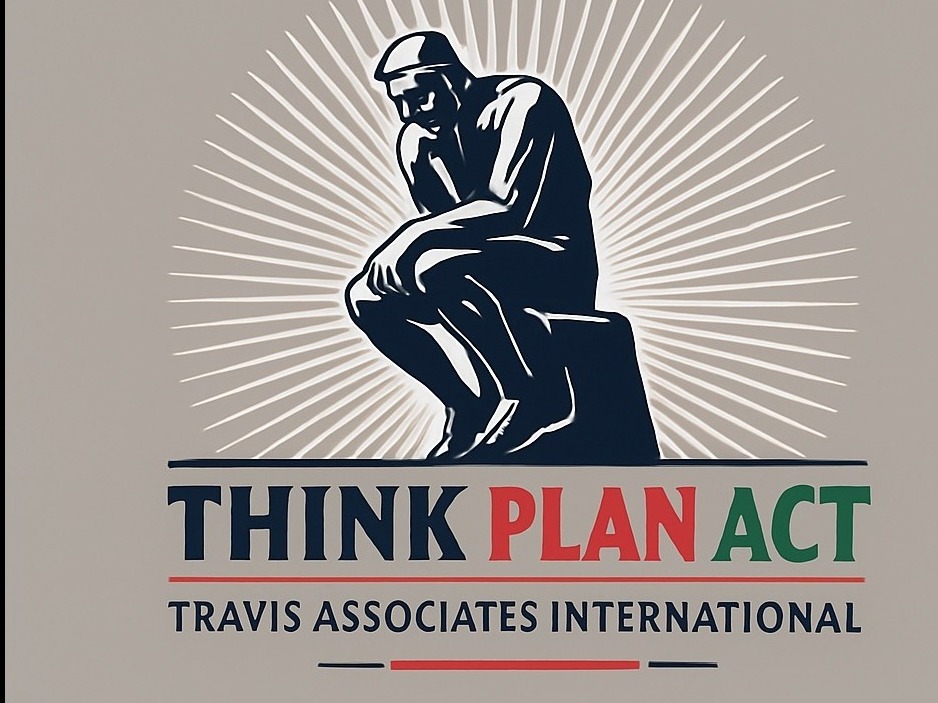Did you know that 59% of consumers prefer to purchase new products from brands familiar to them? In today’s hyper-competitive landscape, brand awareness isn’t just a marketing buzzword—it’s the linchpin of long-term business growth.
- Why robust brand awareness leads to exponential business growth
- Key differences between brand awareness, brand recognition, and brand recall
- How rapid shifts in consumer behavior drive the urgent need to boost brand awareness NOW
| Statistic | Source | Impact on Brand Awareness |
|---|---|---|
| 59% prefer familiar brands | Nielsen | Higher conversion rates |
| 80% of purchase decisions are emotional | Harvard | Branding influences choice |
| 70% of marketers say brand awareness is their top goal | HubSpot | Resource allocation priority |

Brand Awareness — The Must-Know Foundation for Modern Marketing Success
Brand awareness sits at the core of every successful modern marketing strategy . It’s not enough for your products or services to be outstanding—your target audience must know you exist, and more importantly, remember you when it’s time to make a purchase. Why does robust brand awareness matter so much? Because it translates directly into exponential business growth. Brands with high recognition enjoy more trust, command higher prices, and experience better conversion rates. Companies like Nike and Coca-Cola didn’t become market leaders overnight—they invested in building a brand image that consumers instantly recognize and trust.
But, what’s the difference between brand awareness, brand recognition, and brand recall? They often overlap, but each plays a distinct role. Awareness is simply knowing a brand exists. Recognition refers to identifying a brand when you see or hear it, while recall is all about remembering a brand when asked about a product category. In a world where consumer behaviors are shifting rapidly—thanks to digital disruption and an ever-expanding social network— increasing brand awareness isn’t optional; it’s urgent. Fail to do so, and potential customers may simply choose competitors who occupy the top of mind.
How to Build Brand Awareness: Actionable Steps to Instantly Increase Brand Recognition
What Do You Mean by Brand Awareness?
At its simplest, brand awareness means your audience knows and recognizes your brand. But the concept runs deeper. True brand awareness is when your brand name becomes synonymous with a product or category—think “Google” for web searches or “Kleenex” for tissues. When customers recognize your logo, recall your tagline, or instantly think of your brand when considering a purchase, you’ve achieved strong brand recall —the holy grail of marketing. Building brand awareness requires consistent messaging so your target audience not only becomes familiar with your brand but also trusts it. Over time, this awareness forms the basis of customer loyalty and positive brand associations, making people more likely to make a purchase from you over competitors.
The importance of building brand awareness can’t be understated in the current market. Customers are bombarded with choices, so standing out through memorable messaging and a recognizable visual identity is crucial. When brands achieve high awareness, their products and services move higher up the customer decision funnel, leading to repeated purchases and advocate-level customers.
What You'll Learn From This Guide
- Clear definition and importance of brand awareness
- Stages and types of brand awareness
- Effective strategies to build brand awareness quickly
- How to measure and sustain increased brand awareness
- Practical examples, frameworks, and expert insights

Increase Brand Awareness with the Power of Social Media Marketing
How Social Media Channels Turbocharge Brand Recognition
Social media channels represent a game-changer for brands seeking to increase awareness on a global scale. Platforms like Instagram, LinkedIn, TikTok, and Facebook allow brands to showcase their personality, values, and unique selling propositions to massive, engaged audiences. By posting compelling stories and curated visuals, you present your brand image to potential customers in real-time. Social networks also enable two-way conversations, providing valuable customer insights while building an authentic online community.
Moreover, social media marketing fast-tracks your ability to build brand awareness through viral campaigns, influencer partnerships, and real-time community engagement. It’s not just about broadcasting your message; it’s about fostering a dialogue that sticks. When executed with consistency and creativity, social media campaigns boost brand recognition and drive emotional connections, making your brand top of mind during purchasing decisions.
List: Top 7 Social Media Tactics for Building Brand Awareness
- Consistent visual branding across all platforms
- Influencer partnerships with high brand alignment
- User-generated content campaigns
- Interactive stories and live streams
- Hashtag challenges and branded hashtags
- Community management and rapid response
- Paid advertisements with retargeted audiences
Example: Viral Social Media Marketing Campaigns That Increased Brand Awareness
Some of the world’s most successful brands skyrocketed their recognition and recall with innovative social media strategies. For example, Nike’s #YouCantStopUs campaign leveraged athlete influencers and real user stories to connect with a broad audience, amassing millions of shares and likes. Similarly, Wendy’s witty social media banter and real-time responses made them a thought leader in fast food—elevating their brand awareness and positioning them top of mind for quick-service dining.
Brands that embrace interactive features—such as live streams, stories, and viral challenges—offer audiences chances to engage directly. These campaigns go beyond mere recognition; they evoke emotion, foster loyalty, and encourage customer advocacy, leading to sustainable growth in brand equity.

Brand Recall, Mind Awareness, and Recognition: Understanding and Leveraging the 4 Stages of Brand Awareness
What are the 4 Stages of Brand Awareness?
Unlocking the full potential of brand awareness means understanding its evolution. The four main stages are:
- Brand Awareness : Consumers learn your brand exists via introduction or repetitive interactions.
- Brand Recognition : They can pick out your logo, slogan, or visual elements among competitors—an essential step for standing out in crowded markets.
- Brand Recall : Customers remember your brand in specific contexts or when prompted about a product category—the leap from passive recognition to active memory.
- Mind Awareness : Your brand becomes the immediate choice when considered in its category; you’re “top of mind.”
Progressing through these stages helps brands move beyond fleeting attention to become embedded in the emotional decision-making process of consumers. Companies focusing on all four stages enjoy higher customer retention, loyalty, and are better positioned to weather disruptive market changes.
| Term | Definition | Example |
|---|---|---|
| Brand Awareness | General knowledge about a brand | Seeing a logo and knowing the company |
| Brand Recall | Ability to retrieve a brand from memory | Recalling Nike when thinking of running shoes |
| Brand Recognition | Identifying a brand on sight or hearing the name | Spotting Starbucks instantly in a café row |
| Mind Awareness | Being the first brand in mind in its category | Thinking Google for “search engine” |

Key Differences Between Brand Awareness, Brand Recall, and Brand Recognition
While these terms may seem interchangeable, there are distinct differences. Brand awareness refers to consumers knowing your brand exists; brand recognition means they can pick your brand out among others, often due to visual cues or catchphrases. Brand recall is more advanced—it’s when your brand comes to mind unprompted, usually associated with a purchase decision. For example, if a consumer immediately thinks “Nike” when considering sneakers, the brand has achieved recall and, possibly, top-of-mind awareness.
Understanding these nuances is crucial for marketers aiming to build a strong brand. While recognition helps you stand out, recall and mind awareness ensure your brand is considered first—transforming awareness into measurable business growth through increased sales and passionate customer advocacy.
What Are the Three Types of Brand Awareness?
The three types of brand awareness correspond to different stages in the customer journey :
- Brand Recognition : Can customers identify your brand by its visual or auditory cues?
- Brand Recall : Do they remember your brand when prompted about a product category?
- Top-of-Mind Awareness : Does your brand immediately surface as the default choice among competitors?
Each type is vital for building brand loyalty and lasting customer relationships, guiding strategic campaigns tailored to every stage of consumer engagement. Align your messaging and visuals with these stages to drive deeper connections and increase brand equity over time.
While you can’t watch a video here, imagine real-life footage showing consumers walking past a supermarket shelf: some recognize a logo instantly, others recall it when prompted about product options, and a select few head straight for the brand without hesitation. Real-world examples—from Apple’s launches to Google’s ubiquity in search—prove that mastering these stages ensures your brand is not just noticed, but remembered and chosen.
To advance through these stages, focus on omnichannel marketing, memorable creative assets, and campaigns that evoke emotional connections at every customer touchpoint. Consistency and innovation will help you build a brand presence that resonates deeply and stands the test of time.
How to Build Brand: Strategies for Creating Strong Brand Awareness
Effective Tactics for Building Brand Awareness
- Sponsorships and event participation
- Unique storytelling in ad campaigns
- Strategic social responsibility initiatives
- Consistent and memorable visual identity
- Content marketing and knowledge sharing
Effective tactics to build brand awareness go beyond traditional advertising. Attending or sponsoring events exposes your brand to new audiences and allows experiential engagement. Unique storytelling in digital ads or TV spots humanizes your brand, forging emotional bonds that increase brand recognition and recall. Aligning with social causes or sustainability efforts—if they match your brand values—helps your message stand out and resonate with ethically minded consumers.
Maintaining a consistent visual identity across all touchpoints, from your website to packaging, increases familiarity. And content marketing—blog posts, videos, or podcasts—positions your brand as a thought leader, helping potential customers remember you when a purchasing decision arises.

How to Build Brand Recall and Construct a Strong Brand Identity
Developing brand recall and a strong brand identity requires concerted effort. First, clarify your core mission, values, and unique selling points—these guide every message and interaction. Leverage repetition in ad messaging, brand colors, and taglines to cement recall. Slogans like “Just Do It” (Nike) or “I’m Lovin’ It” (McDonald’s) root themselves in memory through frequency and creative delivery.
Next, foster genuine connections with customers by consistently fulfilling your brand promise. Engage audiences with immersive experiences—product demonstrations, customer stories, or behind-the-scenes content. When consumers tell your story to others, your brand becomes embedded in culture, amplifying mind awareness.
“A brand is no longer what we tell consumers it is—it is what consumers tell each other it is.” – Scott Cook
Keep in mind: authenticity wins loyalty. When you empower customers to become brand advocates, you create a cycle of positive exposure and powerful word-of-mouth amplification.

Increase Brand Awareness Rapidly: The Role of Integrated Marketing Campaigns
How a Marketing Campaign Multiplies Brand Recognition
- Multi-channel advertising to reach diverse audiences
- Leveraging data-driven personalization
- Story-driven marketing to foster emotional connection
- Strategic influencer marketing partnerships
An integrated marketing campaign brings together multiple channels—TV, social media, search, email, and even in-store experiences—to reinforce your message everywhere potential customers encounter your brand. By using data-driven insights, brands can personalize their approach, delivering relevant offers and content that feels tailor-made for each recipient.
Emotional storytelling—through narratives, visuals, and even augmented reality—bridges the gap between visibility and trust. Influencer partnerships lend credibility and help your brand reach communities that may otherwise remain untapped. This holistic media marketing approach propagates a stronger brand image, exponentially boosting both recognition and recall.
Strong Brand Awareness Through Omnichannel Media Marketing
Omnichannel media marketing is the key to cultivating strong brand awareness in today’s fragmented digital environment. By synchronizing your presence across web, mobile, social media, and offline spaces, you create seamless experiences that reinforce your brand values and identity at every stage of the customer journey.
Successful brands ensure customers encounter familiar visuals, messaging, and service standards whether they’re browsing online or shopping in-store. This continuity instills trust, accelerates the path from recognition to recall, and keeps your brand top of mind when the purchasing decision arrives.

Measuring Brand Awareness: Tracking Success and Iterating Your Strategy
How to Measure Brand Awareness—Metrics and Tools
- Brand lift and survey studies
- Impression and reach analytics
- Website direct visits and branded search volume
- Social listening tools for brand mentions
- Net Promoter Score (NPS) and customer reviews
To ensure your brand awareness strategy is working, measure progress using reliable metrics and tools. Brand lift studies and customer surveys reveal how perceptions shift and where your brand sits in the consumer mind. Impression and reach analytics on digital platforms track how many people encounter your messaging, while direct website visits and branded search queries indicate deeper engagement and top-of-mind awareness.
Leverage social listening tools to monitor brand mentions across platforms—both positive and negative. Net Promoter Score (NPS) and online reviews reflect actual loyalty and advocacy. Regularly analyzing these metrics sheds light on what’s working, what needs refinement, and where investment will drive the most growth.
Ways to Continuously Increase Brand Awareness and Sustain Growth
Continuous improvement is the secret to long-term brand success. After each marketing campaign, evaluate results and extract actionable insights. Double down on high-performing tactics and retire those that offer little return. Experiment with new formats—interactive video, experiential pop-ups, or co-branded giveaways—to keep your audience engaged and your message fresh.
Build feedback loops into your process: gather insights from customers, frontline employees, and analytics. Use these findings to adapt quickly to changing market conditions, ensuring your brand awareness strategy remains both resilient and effective as your business scales.

Building Brand Awareness: 5 Inspiring Success Stories from Industry Leaders
- Apple’s product launch events fuel global brand recall
- Red Bull’s media-driven marketing campaign builds strong brand awareness worldwide
- Spotify’s personalized playlists promote unique mind awareness
- Ikea’s willingness to localize creates consistent brand recognition
- Airbnb’s community-centric marketing builds brand trust and brand loyalty
“Your brand is a story unfolding across all customer touch points.” – Jonah Sachs
Industry leaders provide powerful blueprints for building brand awareness on a global scale. Apple transforms each product launch into an event, pushing their products to the top of mind worldwide. Red Bull, by associating with extreme sports and high-adrenaline content, became synonymous with energy and excitement. Spotify’s customized playlists embed the brand in daily routines, achieving both recognition and unique mind awareness.
Ikea’s flexible approach—adapting its products and messaging for local markets—has generated dependable brand recognition across continents. Meanwhile, Airbnb focuses on forging deep community bonds, elevating trust and building enduring customer loyalty. Each example proves that creativity, consistency, and customer focus are essential for developing a strong brand that leads its category.

Best Practices for Building and Increasing Brand Awareness Long-Term
Sustaining Strong Brand Awareness with Authenticity and Consistency
- Foster meaningful two-way communication with your audience
- Stay true to your brand promise and values
- Educate customers with high-value content marketing
- Innovate without losing sight of core identity
The hardest part of increasing brand awareness is sustaining it in the long run. Brands that excel year after year maintain authenticity—every interaction reflects their core values and mission. They prioritize transparent, two-way conversations, inviting feedback and acting on customer insights. High-value content marketing educates, entertains, and inspires, helping your brand remain relevant—even when not directly selling.
To stay at the top of mind, innovate thoughtfully, introducing new products and experiences while nurturing the foundational elements that make your brand unique. Trust builds gradually, and with it, a loyal customer base that advocates for your brand, creating a self-perpetuating cycle of awareness and growth.

People Also Ask: Brand Awareness Explained
What do you mean by brand awareness?
Brand awareness is the extent to which consumers recognize and are familiar with your brand and its products or services. It occurs when your brand stands out among competitors, prompting people to recall it during purchase decisions. The stronger your brand awareness, the more likely customers are to trust, choose, and advocate for your brand.
What are the 4 stages of brand awareness?
The four stages of brand awareness are: Brand Awareness (classic recognition), Brand Recognition (identifying the brand on sight or hearing), Brand Recall (retrieving your brand from memory unaided), and Mind Awareness (your brand is the first considered in its category). Advancing through these stages results in deeper brand loyalty and more decisive purchasing behavior.
What are the three types of brand awareness?
The three types of brand awareness are: Brand Recognition (when consumers know your brand visually or audibly), Brand Recall (they remember your brand when prompted), and Top-of-Mind Awareness (your brand is the first choice in its category). Each type helps move customers closer to choosing your brand over competitors.
Why is having brand awareness important?
Having strong brand awareness is essential because it builds trust, shortens the path to purchase, and increases customer loyalty. Brands with high awareness enjoy better market positioning and are favored during buying decisions—making them more resilient to competition and capable of driving long-term business growth.
Frequently Asked Questions About Brand Awareness
- How often should you measure brand awareness? Measuring brand awareness should be a continuous process—ideally quarterly or after major campaigns. Regular assessment allows you to track progress, identify trends, and quickly adjust your strategy to achieve better outcomes.
- What are the best metrics for assessing strong brand awareness? Key metrics include brand recognition scores, recall surveys, direct website visits, branded search volumes, social media mentions, Net Promoter Score (NPS), and online reviews. Together, these offer a comprehensive view of how well your brand is known and perceived.
- Is brand recognition or recall more valuable for rapid growth? Both are important, but brand recall typically has a more direct impact on rapid growth. Recall positions your brand at the top of mind, making consumers more likely to choose you first when making a purchase.
- How can small businesses compete with larger brands in building brand awareness? Small businesses can compete by focusing on authentic, localized engagement, leveraging digital and social channels, and offering unique value. Consistency, creativity, and customer-centricity can help smaller brands build a loyal following and carve out a strong presence in their niche.
Accelerate Your Brand Awareness: Transform Recognition into Long-Term Growth
- Start implementing the above tactics for immediate results
- Regularly measure your brand awareness, optimizing strategies as data surfaces
- Craft a marketing campaign that fosters deep mind awareness and real loyalty
- Connect with us to develop a custom blueprint for increasing brand awareness in your market
“Let’s put your brand in the spotlight—call 908-641-9211 for a free strategy chat and start boosting your brand awareness today!”
To further enhance your understanding of brand awareness and its significance, consider exploring the following resources:
- “Brand Awareness: What It Is and How to Improve It” ( adobe.com )
This article provides a comprehensive overview of brand awareness, including its definition, importance, and actionable strategies to enhance it.
- “Brand Awareness: How To Measure and Improve It” ( surveymonkey.com )
This resource offers insights into measuring brand awareness effectively and provides practical tips for improvement.
If you’re serious about boosting your brand’s visibility and recognition, these resources will equip you with the knowledge and tools necessary to develop and implement effective brand awareness strategies.
 Add Row
Add Row  Add
Add 




Write A Comment